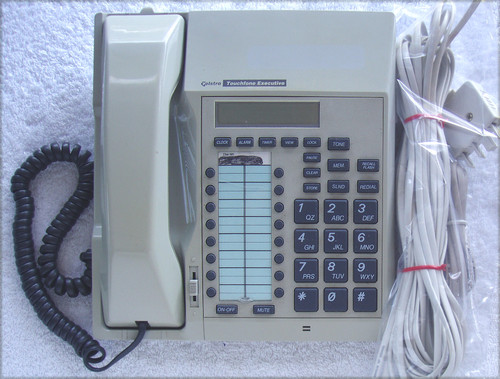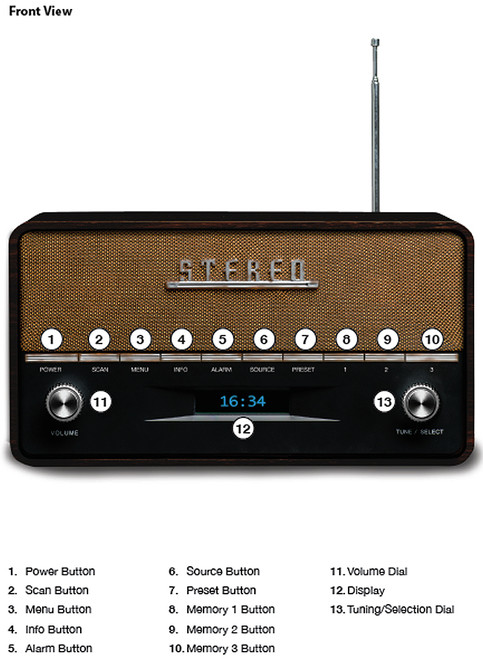These are now considered "dated technology" (analog communications & control using DTMF tones) but these units (I have multiple TESTED units) are fantastic for professional, amateur or hobbyist radio to landline automatic interfacing.
Tara Systems (Australian) were a major supplier of this equipment in the 1980's & 1990's, this equipment could be commonly found in State Emergency, Police and other government agencies throughout Australia.
TARA Radio To Landline Interface
PSTN/POTS Telephone interconnect (Public Switched Telephone Network or Plain Old Telephone system = 2 wire) and control is via DTMF tones.
Model 2020
I am providing the following:
Main system unit
Handset unit (with curly cord)
System interconnect cable - (this is where the unit is connected to the outside world)
ALL of the original Installation & Programming plus the User Manuals have now been supplied with other units
BUT
I have scanned all manuals and will provide scanned copies of the manuals in .pdf format on a CD along with the equipment
These manuals are invaluable and absolutely vital to set up a system properly.
Programming of system parameters is from the front panel - no special programmer is needed
To use this equipment you need access to the standard 2 wire telephone system (or possibly a VOIP service but I haven't tested this equipment with VOIP landline)
No other equipment is needed to get going - connect your landline, connect to your transceiver RX/TX audio lines and RX/TX control (PTT line) and you will be in business.
Proper telephone/equipment isolation with Austel approval
BRIEF FUNCTIONALITY:
You could receive a landline call, isolate the conversation from the radio communications or patch to the radio for landline to radio communications. If patched to air, the landline caller can also activate specific selcall codes to initiate conversations with a specific mobile.
Nothing too exciting here but then ...
Authorised radio mobiles can also access the landline system (using a programmed 2 digit DTMF code) and make their own unassisted calls direct to the landline from their mobile location.
But there's more ...
Incoming landline calls can also be automatically patched to the radio system and thus access mobiles without any operator assistance.
Security features include ...
Built in multi-level access security, meaning that in the event of unauthorised access codes being used by a mobile, the unit can be programmed to "lock out" that user from any further access.
The small monochrome LCD display on the main unit front panel shows current mode (TX-RX-Idle) user code, telephone numbers dialled etc so you know exactly what is happening with the system.
All programming activities are also shown on this LCD screen
There are many many features that can be programmed by the user, too many to list here but I can send you a copy of the Installation & Programming manual if you wanted to see what sort of things can be setup via the programming.
You don't need a doctorate to program this equipment, it is pretty sensible and straightforward but some knowledge of communication systems, in particular landline based telecommunications helps.
SYSTEM TESTING:
EVERY SINGLE UNIT SUPPLIED HAS BEEN TESTED TO THE POINT OF GOING "ON AIR"
I set up a dummy transceiver and transmitted into a dummy load - I let my Amateur licence "go" years ago (VK2DWF)
Most of my tests were made with a focus on the interfacing aspects of the equipment, ensuring it was working as designed.
I did send all audio/control tones out to a "dummy transceiver" and also a simulated mobile setup but using very low RF power into a dummy load. To do otherwise would have been illegal.
So let's get to the nuts & bolts of the testing
You need to supply 8-16V DC @ around 500mA (normal operating current is around 150mA)
The manual clearly indicates ALL the pin designations at the rear D connector of the unit - its easy to sort out the supply line.
Checked landline outcalling, monitoring via the handset, DTMF signalling - all functioning correctly.
Analog audio signalling to the transceiver and from the transceiver also checked fine.
These units are tough as nails - that's a solid steel case and the handset is actually from Tytel, and lightweight.
These were built for use in tough, rugged environments (such as the State Emergency Services) to provide reliable use every single day.
The handset has a built-in magnetic microswitch which looks after detecting when the handset has been lifted - there is also a 3.5mm socket at the rear for a headset.
The handset also has a low power audio amplifier built in (instructions on how to enable this are in the manual) for handsfree operation.
The main control unit also has a monitor speaker built in.
These systems can be used standalone or because they use a buss system on the outputs, multiple unit configuration is possible across a common communications buss.
I have stripped back the supply lines on the cable (for easy identification) and the manual outlines the signals available on the D25 connector.
Being old technology, spare parts can be an issue BUT have no fear ....
I have a range of spare parts (boards, EPROM's etc) that will be advertised shortly in addition to these main units
COSMETIC CONDITION:
This equipment is used, it has been in heavy use (in some cases) and cosmetic damage to the baked enamel finish on the steel case is visible on SOME units. The steel cases are NOT damaged in any case - these are very STRONG, you could stand on one and it wouldn't blink an eye!
The photograph with this advertisement shows the WORST case, to give you an idea of the worst to expect re the cosmetics.
Since decommissioning this equipment (and after all the testing - that took quite some time!) I have now packed the equipment safely away and into sealed plastic to maintain the condition.















